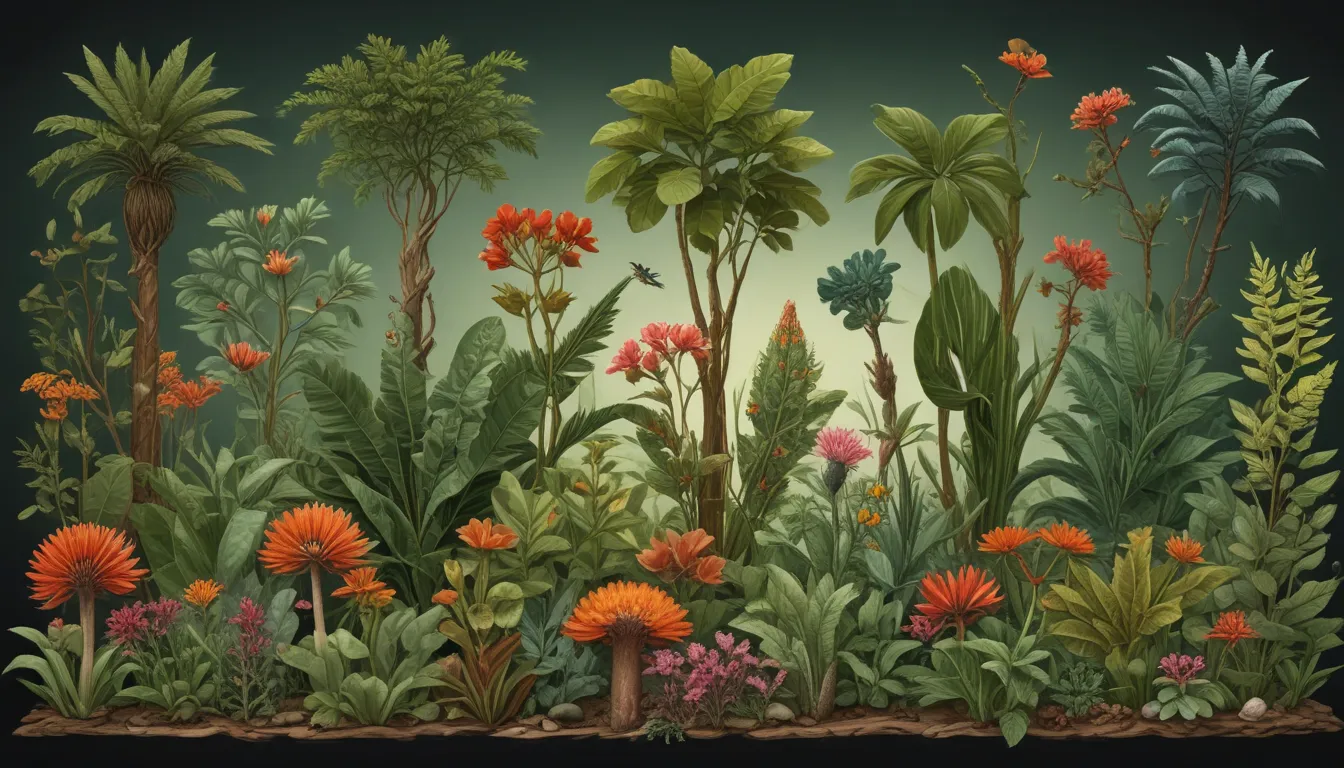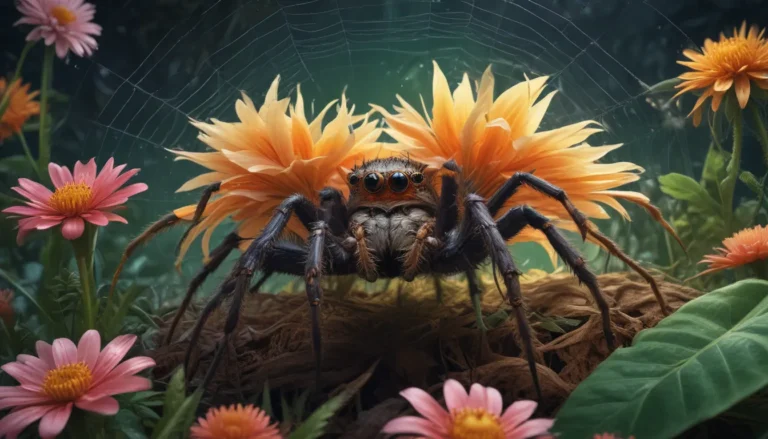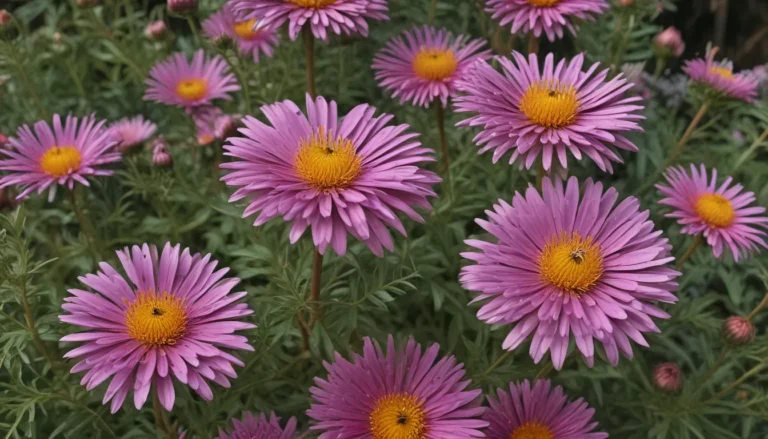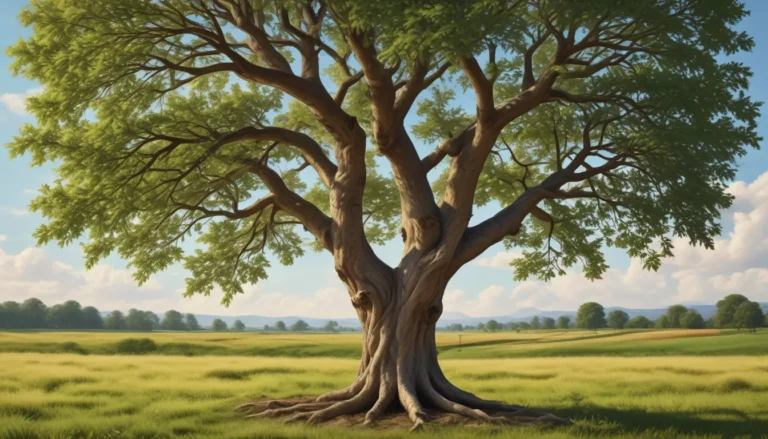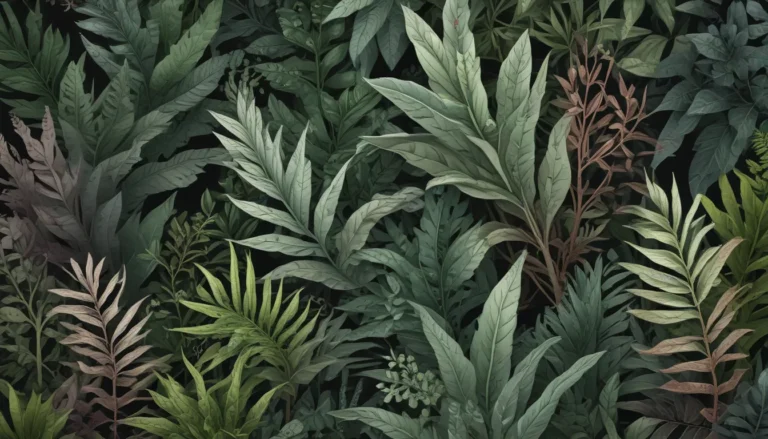The pictures we use in our articles might not show exactly what the words say. We choose these pictures to make you interested in reading more. The pictures work together with the words but don’t take their place. The words still tell you the important facts.
Africa is a continent teeming with a diverse array of plant life, each species showcasing its unique characteristics and cultural significance. From the majestic baobab trees to the vibrant desert blooms, African plants have long been intertwined with the continent's history and heritage. Let's embark on a fascinating journey through the realm of African plants, uncovering intriguing facts about their adaptations, uses, and ecological importance. Whether you're a botany enthusiast, a nature lover, or simply curious about the natural world, these captivating plant facts are sure to deepen your appreciation for the botanical marvels of Africa.
Key Takeaways:
- The Baobab Tree can store an incredible amount of water, helping both animals and humans survive in the African savanna during droughts. - African plants like the Welwitschia and Impala Lily showcase nature’s resilience and beauty, while also serving as important resources for wildlife and traditional medicine.
The Baobab Tree: Nature’s Lifesaver
The Baobab tree, also known as the "tree of life," is an iconic symbol of the African savanna. Its ability to store massive amounts of water within its trunk allows it to survive in arid environments, making it a vital resource for both wildlife and humans in times of drought. The baobab tree can hold up to 32,000 gallons of water, offering a lifeline to thirsty creatures during harsh conditions.
The Welwitschia Plant: A Testimony to Longevity
Found in the Namib Desert, the Welwitschia plant is renowned for its extraordinary longevity. Despite its harsh and arid habitat, this plant can live for over 1,000 years, showcasing nature's resilience and beauty. The Welwitschia has adapted to thrive for centuries in challenging conditions, serving as an important resource for wildlife and a symbol of endurance in the desert landscape.
The Impala Lily: Beauty with a Toxic Twist
The Impala Lily, with its vibrant pink flowers and glossy leaves, is a highly toxic plant that poses a danger to both humans and animals. Despite its striking appearance, this plant serves as a cautionary reminder of the potential hazards lurking within the African wilderness. Its toxic nature underscores the importance of understanding and respecting the flora of the region.
The Sausage Tree: Nature’s Bounty
The Sausage Tree produces large, heavy fruits that are a standout feature of the African landscape. These elongated fruits, though inedible for humans, serve as a vital food source for various animals, contributing to the rich tapestry of wildlife in Africa. The tree's bountiful fruits highlight the interconnectedness of plant and animal life in the African ecosystem.
The Devil’s Claw Plant: Cultural and Medicinal Significance
The Devil’s Claw plant, characterized by its claw-shaped fruits, holds significant cultural and medicinal value in African traditional healing practices. Indigenous communities utilize its roots and tubers for their purported anti-inflammatory and pain-relieving properties, showcasing the plant's role in traditional medicine. The unique appearance of the Devil’s Claw plant reflects its rich cultural heritage and importance in local healing traditions.
The African Tulip Tree: A Fiery Spectacle
Renowned for its stunning display of fiery red or orange flowers, the African Tulip Tree adds a vibrant touch to the African ecosystem. Its dazzling blossoms have earned it the moniker "Flame of the Forest," captivating all who encounter its vivid hues. The African Tulip Tree's striking appearance and vibrant blooms make it a beloved feature of the African landscape, enhancing the natural beauty of the region.
The Marula Tree: Nature’s Generosity in a Fruit
The Marula Tree's fruits are not only enjoyed by wildlife but also play a role in the creation of the popular Amarula liqueur. These succulent fruits are harvested to produce a distinctive African beverage, blending nature's bounty with human craftsmanship. The Marula Tree's contribution to the production of Amarula liqueur highlights the plant's cultural and economic significance in the region.
The Quiver Tree: A Symbol of Tradition
Endemic to the arid landscapes of Southern Africa, the Quiver Tree is a species of aloe known for its historical significance and striking appearance. Its hollow branches were traditionally used by indigenous peoples to craft quivers for their arrows, giving rise to its evocative name. The Quiver Tree's unique features and cultural importance symbolize the deep connection between plants and human traditions in Africa.
The Desert Rose: Beauty in Adversity
The Desert Rose, adorned with striking pink or red flowers, thrives in the harsh conditions of the African desert. Its remarkable ability to store water in its fleshy stems enables it to endure extended periods of drought, showcasing nature's resilience in challenging environments. The Desert Rose's exquisite blooms serve as a testament to the plant's ability to thrive in adversity, adding to the botanical diversity of the African landscape.
The Monkey Bread Tree: A Giant of the Succulents
The Monkey Bread Tree, with its colossal trunk and expansive crown, stands as the largest succulent plant in the world. Its ability to thrive in semi-arid regions makes it a prominent feature of the African landscape, commanding attention with its imposing presence. The Monkey Bread Tree's grandeur and unique characteristics highlight the diversity of succulent plants in Africa, adding to the natural splendor of the continent.
The Red Hot Poker Plant: Nature’s Magnet
Adorned with vibrant, torch-like flowers, the Red Hot Poker plant attracts a myriad of birds and butterflies with its nectar-rich blooms. Its striking appearance and colorful blossoms serve as a magnet for avian and insect visitors, contributing to the biodiversity of the African ecosystem. The Red Hot Poker plant's ability to attract wildlife underscores its importance in supporting various species and enriching the natural environment.
The Kigelia Africana: A Fruitful Tree
Named for its sausage-shaped fruits, the Kigelia Africana is a distinctive tree that holds cultural significance in various African communities. Despite its fruits being inedible for humans, they are a valuable food source for wildlife, showcasing the plant's role in sustaining local ecosystems. The Kigelia Africana's unique features and ecological importance reflect the intricate relationships between plants and wildlife in African habitats.
The African Hemp Plant: A Versatile Resource
The African Hemp plant has been utilized for centuries in the crafting of ropes, baskets, and other essential items. Its fibrous stems are prized for their strength and durability, serving as a cornerstone of traditional craftsmanship in Africa. The plant's versatile nature and utility in various applications highlight its cultural and economic importance in local communities, showcasing the plant's role as a valuable resource.
The Red Bushwillow Tree: A Source of Healing
In African traditional medicine, various parts of the Red Bushwillow tree are employed for their purported healing properties. From treating ailments to providing relief, this tree holds a significant role in indigenous healing practices, exemplifying the traditional knowledge and use of plant-based remedies. The Red Bushwillow tree's medicinal significance underscores the deep connection between plants and human well-being in African cultures.
The Aloe Vera Plant: A Medicinal Marvel
Aloe Vera, a succulent species native to Africa, is celebrated for its multifaceted medicinal uses. From soothing sunburns to aiding digestion, this plant has been cherished for its therapeutic benefits for centuries, showcasing its versatility and healing properties. The Aloe Vera plant's reputation as a medicinal marvel highlights its importance in traditional and modern healthcare practices, symbolizing the plant's significance in promoting health and well-being.
The Fever Tree: Nature’s Remedy
The Fever Tree, named for its traditional medicinal use, has long been recognized for its healing properties. In African traditional medicine, its bark was used to alleviate fevers, emphasizing the plant's role as a natural remedy in local communities. The Fever Tree's medicinal value and historical use underscore the plant's cultural significance and contribution to traditional healing practices in Africa.
The African Blue Lily: A Symbol of Transformation
The African Blue Lily, also known as the Agapanthus, holds cultural significance as a symbol of renewal and new beginnings in African folklore. Its striking blue blossoms are associated with positive transformation and growth, symbolizing the plant's role in inspiring change and renewal. The African Blue Lily's symbolism and beauty reflect the plant's cultural importance and connection to themes of rebirth and transformation in African traditions.
The Cape Fig: A Fruity Feast for Wildlife
Native to the Cape region of South Africa, the Cape Fig, or Ficus Sur, is a noteworthy species of fig tree. Its fruits, known as figs, are a valuable food source for various animals, contributing to the ecological diversity of the region and supporting wildlife populations. The Cape Fig's role in providing sustenance for local fauna underscores its importance in maintaining ecosystem balance and supporting biodiversity in African habitats.
The Candelabra Tree: A Striking Silhouette
The Candelabra Tree, characterized by its candelabra-like silhouette, is a remarkable succulent species that stands as a prominent feature of the African landscape. Its imposing stature and unique form make it a captivating sight in its native habitat, showcasing the plant's striking appearance and ecological significance. The Candelabra Tree's distinctive silhouette and presence exemplify the diversity and beauty of African flora, enriching the continent's natural heritage.
Conclusion
In conclusion, African plants offer a rich tapestry of botanical wonders that are not only visually captivating but also integral to the continent's ecosystems and cultures. From the iconic baobab tree to the vibrant bird of paradise flower, each plant species showcases unique adaptations, uses, and ecological importance. By understanding and appreciating the diverse characteristics of African plants, we can foster conservation efforts and harness their potential for sustainable development. Embracing the botanical heritage of Africa is not only a matter of ecological importance but also a celebration of the continent's natural splendor, showcasing the intricate connections between plants, wildlife, and human communities.
FAQs
What are some iconic African plants?
African plants encompass a wide array of iconic species, including the baobab tree, acacia tree, bird of paradise flower, and the striking flame lily. These plants are not only visually captivating but also hold cultural and ecological significance, enriching the natural heritage of the continent.
How are African plants utilized by local communities?
African plants have been utilized by local communities for various purposes, including traditional medicine, food, and cultural practices. For instance, the baobab tree's fruit is a rich source of nutrients, and its leaves are used for medicinal purposes. Additionally, the marula tree's fruit is used to produce a popular alcoholic beverage, Amarula liqueur, highlighting the diverse uses of African plants in local cultures and economies.
With their resilience, beauty, and cultural significance, African plants continue to captivate and inspire, enriching the continent's diverse ecosystems and traditions. Each plant species weaves a unique story into the vibrant tapestry of Africa's botanical wonders, inviting us to appreciate and protect the rich natural heritage that surrounds us.
